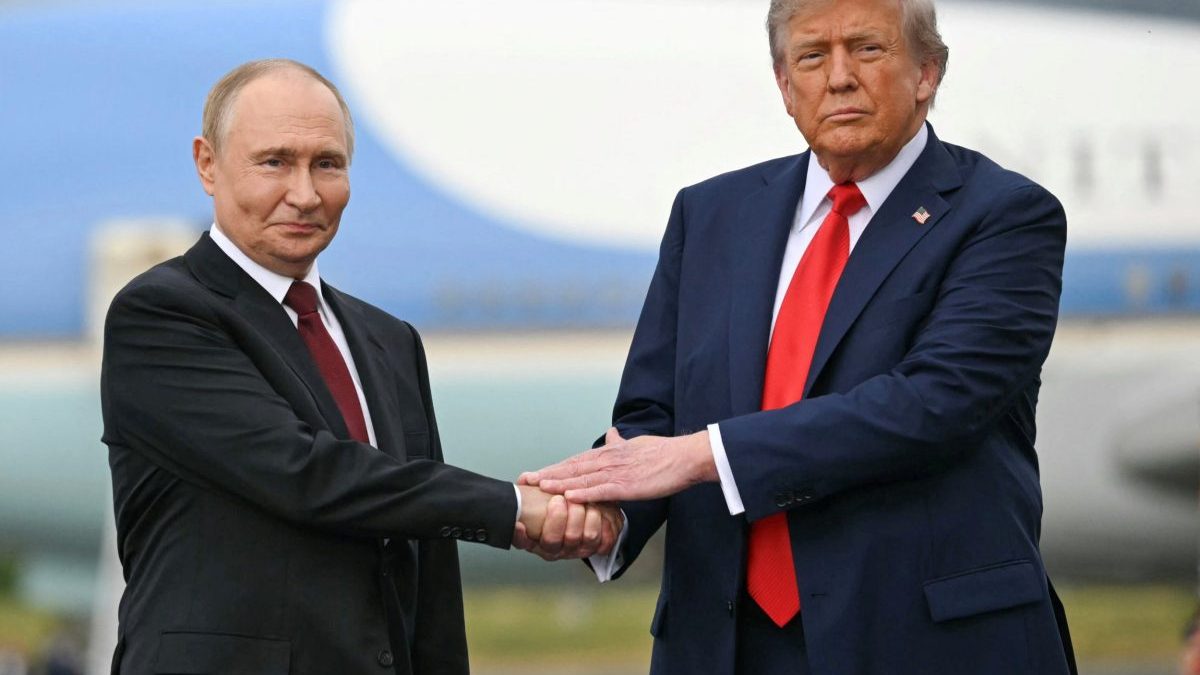
The Russian President has his US counterpart twisted around his little finger – posing a major challenge for Europe
Vladimir Putin appears to have pulled it off yet again. Amid reports that Donald Trump’s Friday meeting with Volodymyr Zelensky went off the rails as soon as the cameras left the White House Cabinet Room, the Russian leader can be certain that 24 hours earlier he played his American counterpart like a violin.
Putin’s decision to entice the US President into a two-hour phone call on Thursday was designed to place conditions on the outcome of Friday’s meeting with Zelensky. The strategy worked to perfection. By ensuring his was the last voice in Trump’s ear before the Ukrainian leader arrived in Washington, the Russian President could be confident that the Kremlin’s positions over the war in Ukraine would dominate the following day’s conversations.
As a consequence, by the time Trump and Zelensky shook hands, there was no prospect that the Ukrainian leader might secure Trump’s promise of Tomahawk missiles that would allow Kyiv’s armed forces to strike deep into Russian territory. Gone from Trump’s narrative about the war were even his most recent suggestions that Ukraine might win it.
Less than a month ago – on 23 September – after meeting Zelensky on the fringes of the United Nations General Assembly in New York, Trump assailed Putin as a “paper tiger” and claimed that Kyiv was “in a position to fight and win all of Ukraine back in its original form”. That U-turn was music to the ears of European leaders, including Prime Minister Sir Keir Starmer, who had raced to Washington to join Zelensky on his 18 August visit to the White House following Trump’s failed Alaska summit with Putin.
But on Friday, there was no European entourage to support Zelensky and keep Trump on the straight and narrow. The result: a Trump tantrum. European officials briefed about the meeting by their Ukrainian counterparts said the US President angrily threw maps of Ukraine to one side, told Zelensky that he needed to accept Putin’s terms for peace or else the Russians would “destroy” his country, and insisted the Kremlin’s economy is “doing great”.
Zelensky departed the White House bereft. Trump then hammered his latest viewpoints home in an interview with Fox News that was broadcast over the weekend. “They have tremendous bad blood,” he grumbled about the two warring leaders. But describing his phone call with Putin as “a very good talk”, he indicated that Russia deserves to “take significant property from Ukraine” in any peace settlement.
“They fought, and [Putin] has a lot of property. He’s won certain property,” Trump declared, in a complete reversal of his position in late September.
By Sunday night, as he flew back to Washington from Mar-a-Lago, Trump was telling reporters that Ukraine should be ready to “cut up” its territory in order to secure peace. “Let it be cut the way it is … leave it the way it is right now,” he proposed, indicating an impatience to put the conflict behind him. He made no mention of his proposal only last week to create a “victory fund” for Ukraine by putting tariffs on China over its purchases of Russian oil, suggesting the hastily conceived idea has been just as quickly abandoned.
The President’s comments suggest that he favours Ukraine ceding the Crimean Peninsula and the Donbas to Russia, potentially even allowing Russian forces to leapfrog over current Ukrainian defensive lines. Taking his remarks to their logical conclusion, the southern city of Kherson would remain in Ukrainian hands, and Russia would also be required to abandon its ongoing efforts to control Zaporizhzhia, home to Europe’s largest nuclear power plant.
But Trump lacks attention to detail, and at Friday’s meeting reportedly fumed over Ukrainian maps showing red lines favoured by Kyiv in any settlement. “This red line, I don’t even know where this is. I’ve never been there,” Trump said, after describing himself “sick” of repeatedly being presented with the map of the current disposition of forces.
For European leaders, Trump’s latest wobble poses a massive problem, revealing that urgent muscular action is required to try and override Putin’s arguments in Trump’s mind. More worrying still is the prospect of another summit between Trump and Putin that may take place within a fortnight in Budapest. There, Prime Minister Victor Orban is poised to further tilt the American leader’s thinking in Moscow’s direction.
On Friday, Trump said that Hungary had been specifically selected because of Orban’s friendly relationship with both him and Putin. Orban is “a leader that we like. He likes him. I like him … he’s been a very good leader,” said Trump. Orban, who has expressed long-held opposition to Nato backing for Ukraine, said on Friday that he leads “the only country that has consistently, openly, loudly and actively advocated for peace”, a contention that Zelensky would surely counter.
For Kyiv and worried European governments, the next few weeks will be critical. The UK Prime Minister and his colleagues are back to square one in their conversations with the White House, and will struggle anew to overcome Putin’s proven capacity to twist Trump around his little finger.
